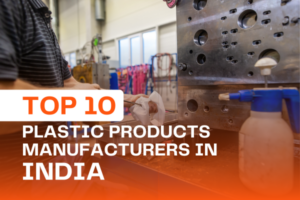Navigating the Essentials: What Every Medical Device Developer, Manufacturer, and OEM Should Know About Injection Molding ?
In the fast-evolving landscape of medical device development, choosing the right manufacturing processes is crucial. Among these, injection molding stands out as a key player. In this comprehensive guide, we’ll explore three vital aspects that every medical device developer, manufacturer, and OEM should be well-versed in when it comes to injection molding.
All Thermoplastic Processes Require Validation
The production of medical devices demands an uncompromising commitment to quality and safety. This begins with understanding that all thermoplastic processes, including injection molding, require validation. Rigorous testing and validation procedures ensure that the final product meets the stringent standards set by regulatory bodies.
For medical injection molding, adherence to guidelines such as ISO 13485 is paramount. This standard specifically addresses the unique requirements of medical device quality management systems, emphasizing the need for validation throughout the manufacturing process.
Validation Doesn’t Have to Be Complicated:
While the term ‘validation’ may sound complex, it doesn’t have to be an insurmountable challenge. In fact, with the right approach, validation can be streamlined and integrated seamlessly into the production workflow.
Utilizing advanced technologies, such as real-time monitoring systems and process control software, simplifies the validation process. These tools not only ensure compliance but also provide valuable insights into the efficiency of the injection molding process. Collaborating with experienced medical injection molding companies can further simplify validation, as they bring a wealth of expertise to navigate regulatory requirements.
Operational Controls Should Separate Parameters from Settings
Precision is paramount in medical device manufacturing. The third crucial element revolves around operational controls, emphasizing the separation of parameters from settings in the injection molding process. This distinction is pivotal for maintaining consistency and repeatability in production.
By clearly defining and controlling process parameters, such as temperature, pressure, and cycle times, manufacturers can achieve a higher level of quality assurance. The use of advanced technologies, including automation and robotics, facilitates the precise management of these parameters, reducing the risk of variability in the final product.
Five types of injection moulding used in medical device technology
Medical device technology relies heavily on injection molding for the production of various components and devices. Here are five types of injection molding techniques commonly used in the medical device industry:
1. Medical Grade Silicone Injection Molding
Description: Medical grade silicone injection molding is a specialized process for producing medical devices made from silicone elastomers. Silicone offers unique properties such as flexibility, biocompatibility, and resistance to heat and chemicals.
Applications: Commonly used for manufacturing medical-grade seals, gaskets, tubing, and other flexible components.
2. Cleanroom Injection Molding
Description: Cleanroom injection molding is a controlled manufacturing environment that minimizes the presence of airborne particles and contaminants. This is crucial for medical devices requiring a sterile or controlled environment.
Applications: Ideal for producing medical components, such as surgical instruments, drug delivery systems, and diagnostic equipment.
3. Micro Injection Molding
Description: Micro injection molding is a precision molding process used to produce extremely small and intricate parts. This technique is vital for the miniaturization of medical devices and components.
Applications: Microfluidic devices, micro connectors, and other small-scale medical components benefit from this high-precision molding process.
4. Overmolding in Medical Injection Molding
Description: Overmolding involves combining two or more materials in a single injection molding process. In medical device technology, overmolding is often used to encapsulate or cover a rigid component with a softer material for enhanced functionality or patient comfort.
Applications: Overmolding is employed in the production of handles for surgical instruments, ergonomic grips for medical tools, and encapsulation of electronic components.
5. Insert Molding for Medical Devices
Description: Insert molding is a technique where a pre-formed component (insert) is placed into the mold, and the plastic material is molded around it. This process is efficient for creating complex parts with embedded features.
Applications: Used for medical devices with metal or other non-plastic components, such as inserting metal pins into plastic housings for surgical instruments or incorporating electronic components into medical equipment.
Understanding and leveraging these different injection molding techniques allow manufacturers in the medical device industry to meet specific design requirements, achieve high precision, and ensure the production of reliable and safe products for healthcare applications.
Conclusion:
In the competitive realm of medical device manufacturing, a thorough understanding of injection molding is indispensable. From stringent validation requirements to the importance of operational controls, each aspect plays a vital role in ensuring the production of high-quality medical devices.
For those considering overseas medical injection molding, partnering with reputable companies specializing in medical-grade silicone injection molding and plastic injection molding for medical parts is crucial. These companies bring not only technical proficiency but also a commitment to compliance with global regulatory standards.
In conclusion, by embracing these key principles and collaborating with experienced partners, medical device developers, manufacturers, and OEMs can navigate the complexities of injection molding, ensuring the delivery of safe and reliable products to the healthcare industry.




